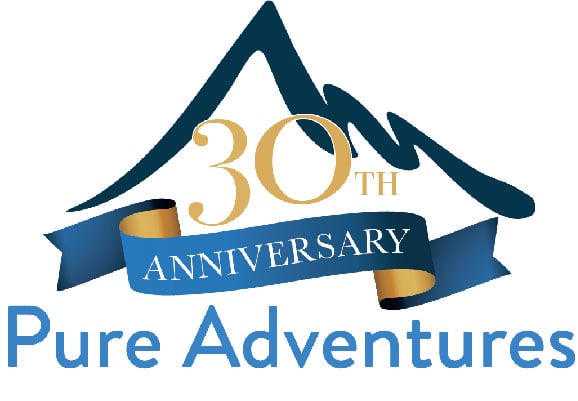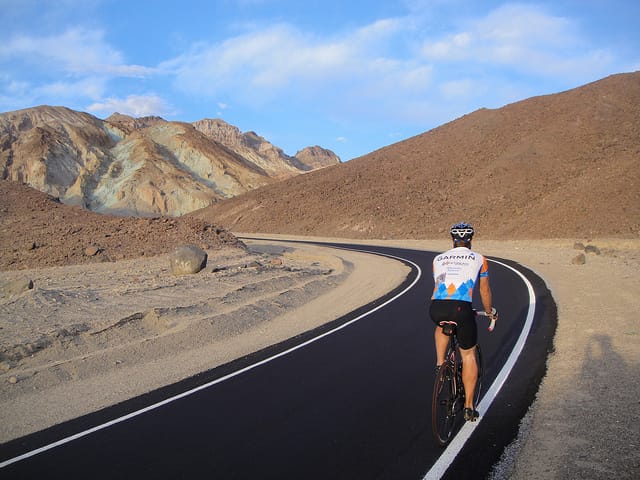Visiting Death Valley is a bucket list item for many mountain bikers and travelers. No where else on earth will you find the unique geological features and breathtaking features found in our country’s largest National Park. But to really experience Death Valley, you need to get off the highway and typical tourist tracks and explore the park by bike, and it’s a physical challenge that shouldn’t be taken lightly. Smart travelers need to prepare both their gear and their bodies before taking a multi-day mountain biking trip to Death Valley National Park.
Pure Adventures spoke with guides from AOA for their expert (and essential) tips for a safe Death Valley adventure.
Watch the Weather
Based in Scottsdale, Arizona, AOA’s Annemarie Medrzycki is a hiker and cyclist who knows how quickly weather conditions in the American Southwest can change. “One of the most important considerations when visiting the desert Southwest is to prepare for all sorts of weather conditions. The air temperature here and in Death Valley, can drop quickly at night. Exposure is often one of the greatest threats to individuals caught outdoors unprepared,” advises Medrzycki.
Prepare to Pre-hydrate
For at least 3 days before your departure, drink a 3 liters of water per day at least, particularly for hikers and cyclists visiting Death Valley. “Hydration is extremely important,” says Medrzycki. “It is very easy to get dehydrated without realizing it because your sweat will evaporate without your noticing – you may not realize the level at which you are exerting yourself.” Because of how much you will be sweating during your trip, remember that water alone will not do – take in a lot of sugar and salts to replace electrolytes. A commercial electrolyte product (think Gatorade, Ultima or Nuun) is a good idea, or make your own using sea salt, honey and water.
It’s not always newbies who make hydration mistakes. “Even athletes who are more conscious of these things than most individuals are likely to take in too little while exercising in the desert,” adds Medrzycki, and suggests dusk and dawn as the best times to log miles. We recommend at least 3 1-quart bottles or a hydration bladder that will hold that much liquid.
Fuel with Food
A mountain biking trip in Death Valley is not the time to cut calories. Your body needs fuel to power through the climbs that Death Valley promises. “We always remind people that when it comes to snacks you need sweet and salty, this is one reason that trail mix is a go-to.” says Medrzycki. Dried fruit is a great trail snack and a nice change from commercially prepared bars. Real foods are important, not simply power bars and energy gels. Pack food that will withstand high temperatures and being jostled around in your pack. While chocolate bars might be tempting, that sweet treat at the end of the day will be a gooey mess. Sturdy homemade energy bars that won’t end up as a bag of crumbs will give you the energy you need.
Top Pack Picks
Pure Adventures’ Death Valley mountain biking is hotel-based, which means you don’t need to carry all of your gear all the time. In fact, it’s recommended that you bring only what you need – our guides appreciate your lean packing. Your daytime mountain biking pack should be in the 1500 – 2500 cu. in. range, which gives you plenty of space for the following essential items:
- water bottles
- personal food items
- sunblock and lip balm
- camera
- small personal first aid items (moleskin for emergency foot care)
- lightweight fleece jacket
- long pants
- sun hat
- wool or fleece hat
- spare socks
Contact Pure Adventures to book your Death Valley cycling tour today!

